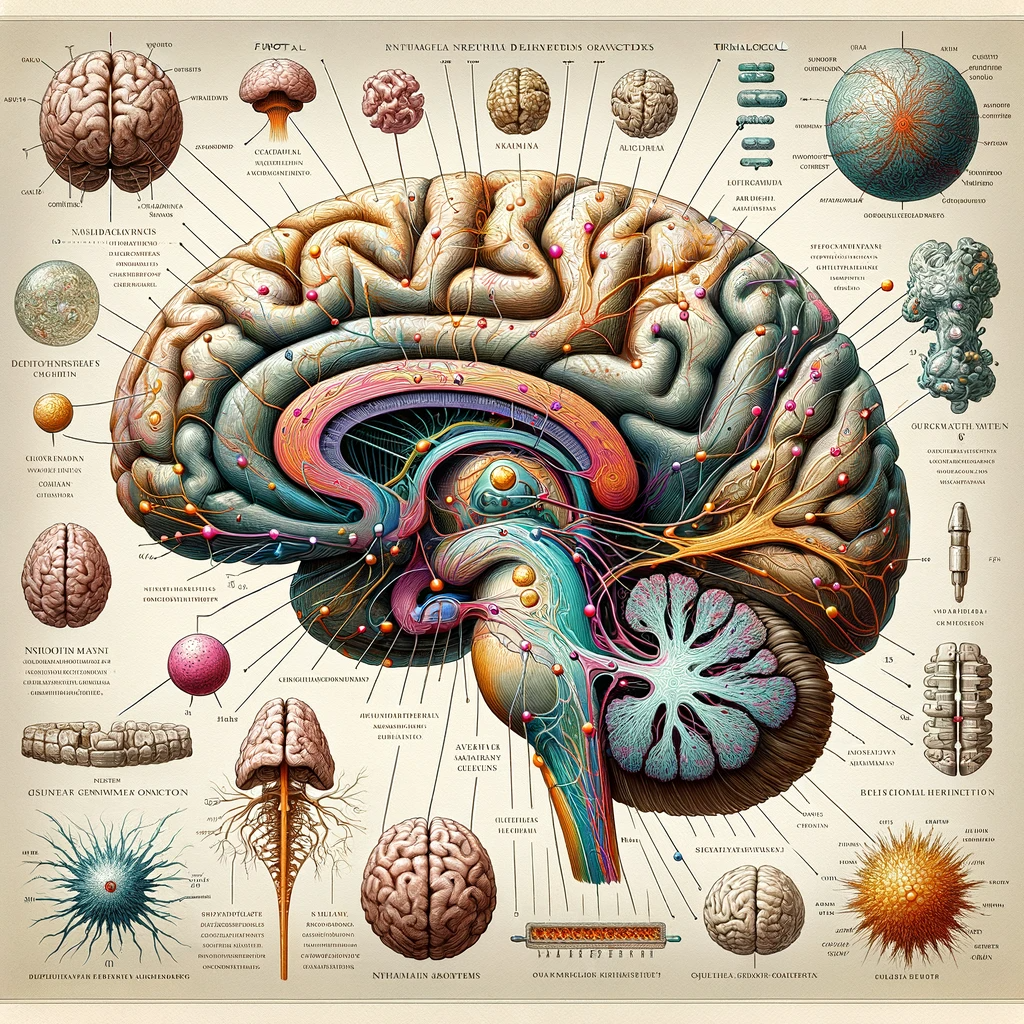Did you know?
1/6/20242 min read
Neuronal Orchestra: Complexity Beyond Compare: Picture a more intricate and extensive network than the most advanced digital networks. The human brain, weighing about three pounds, is a hub of roughly 86 billion neurons. Each neuron, a node of bustling activity, forms between 1,000 to 10,000 synaptic connections, culminating in an astonishing 100 trillion synapses. This is akin to having relationships that far outnumber the global population, a testament to the brain's incredible complexity. These synapses are dynamic, constantly evolving with every new experience, demonstrating the brain's remarkable adaptability.
Blueprint of the Brain's Realms: The cerebrum, split into dual hemispheres, is the command centre for our higher thinking processes. Each hemisphere is segmented into four distinct lobes: the frontal, parietal, temporal, and occipital. Like a sophisticated control room, the frontal lobe manages advanced functions like decision-making and conscious movement. The parietal lobe, a hub of sensory interpretation, plays a vital role in understanding spatial relationships. The temporal lobes, housing critical areas such as the hippocampus and amygdala, are the epicentre of memory and emotion. Lastly, the occipital lobe acts as our visual processing unit, interpreting the visual world around us.
Neuroplasticity: The Brain's Remarkable Adaptability: Contrary to earlier beliefs of a static adult brain, modern research unveils its extraordinary capacity for change. Neuroplasticity allows for new neural connections and even neuron formation (neurogenesis), particularly in areas like the hippocampus. This adaptability is crucial for learning, memory formation, and healing from brain injuries, demonstrating the brain's ability to self-optimize in response to new challenges and information.
The Brain's Communication Superhighway: The brain interfaces with the body via the spinal cord and an extensive network of nerves, constituting the peripheral nervous system. This system functions like a high-speed network, transmitting signals at rapid speeds. These signals are mediated by neurotransmitters that bridge the gap between neurons. Each neurotransmitter, such as dopamine and serotonin, has a specific role, influencing aspects like pleasure and mood.
Unlocking Brain Secrets with Imaging Technology: Modern techniques like fMRI and PET scans have revolutionized our insight into the brain. fMRI tracks brain activity by detecting blood flow changes, revealing active brain regions during various activities. PET scans, using a small amount of radioactive material, illuminate how tissues and organs function, invaluable for both scientific research and medical diagnosis.
The Blood-Brain Barrier: Ultimate Protector: This barrier acts as a selective filter within the brain's capillaries, crucially blocking harmful substances in the bloodstream from entering brain tissue while permitting essential nutrients. This protective mechanism is vital but poses challenges in delivering medications to the brain, particularly for neurological conditions.
Sleep: Essential for Brain Health: The brain engages in vital consolidation and cleansing processes during sleep, especially in its deeper stages. Recent research indicates that sleep aids in clearing out neuronal waste, potentially playing a role in preventing neurodegenerative diseases. This cleaning process occurs via the glymphatic system, the brain's specialized pathway for waste removal.
In summary, the human brain is a marvel of evolution and biological sophistication, an organ that enables us to reach the heights of contemplation and creation. Its intricate workings and vast capabilities are a testament to the wonders of nature, inviting us to explore and understand its mysteries.


